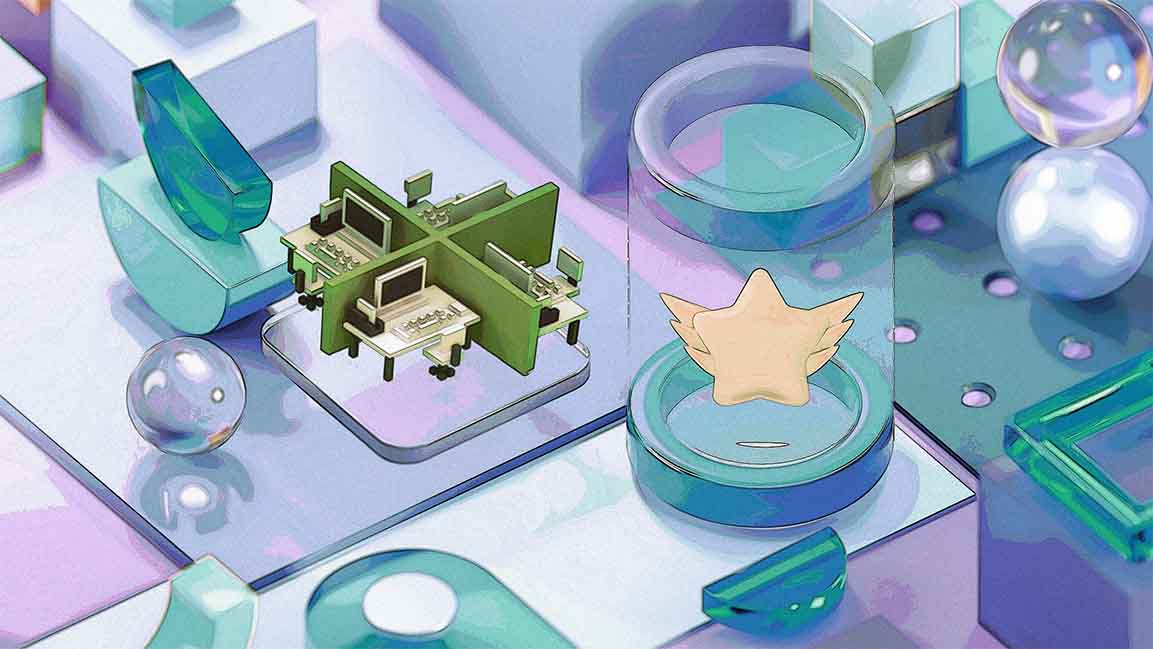- | 9:00 am
How can companies in the Middle East engage and retain employees?
Game mechanics such as points, badges, leaderboards, levels, and rewards can enhance learner’s engagement, motivation, and participation.

What makes you obsessed with the game you are currently playing? Each time you see the progress bar or a message congratulating you on completing a step, the exhilaration increases – climbing the leaderboard keeps you engaged for hours.
While retaining the talent needed for businesses to run is the core issue for most CEOs, enhancing employee engagement through gamification is one of the finest strategies. It fosters cooperation among those working toward the same goals.
“With more and more CEOs having their bonuses related to retention, this is not something that should be ignored,” says Noona Nafousi, founder and CEO at Neo Noor.
The Great Resignation is a barometer for how poorly businesses communicate with their employees. Poor learning prospects were also one of the reasons for employees to quit. And that’s because employees need to feel they are growing professionally and gaining new skills. That includes not just receiving instruction but also engaging in enjoyable work.
“As children, we learn a lot faster through play. This has been proven with successful learning methods, like Montessori, which focuses on hands-on and collaborative play to ensure retention of new information. Unfortunately, the conventional academic education system replaced the sense of play with more rigid learning methods for adults that we know now aren’t optimal for our needs and certainly do not guarantee information retention,” says Shereen Tawfiq, CEO at Balinca.
“Scientific research consistently backed this up by proving that learners who only rely on listening retain only 20% of what they hear over time. We must involve as many senses as possible to maximize information retention. This happens when we introduce ways to activate the touch, sight, and hearing senses and offer gamification for learners to enjoy their time at the same time,” Tawfiq adds.
Playing an expert game that teaches us a skill and lets us make mistakes in an environment where we are not afraid of the consequences is the best method to get all the good hormones (like dopamine and endorphins) working in a learning situation. It builds engagement.
However, experts say designing better mechanics has been a problem with gamification over the years.
DESIGNING BETTER GAME MECHANICS
Designing game mechanics for engagement and motivation in gamified learning and development programs requires careful consideration of various factors. According to Nafousi, it includes setting clear goals, incorporating meaningful challenges, providing immediate feedback, and offering rewards and recognition mechanisms that align with the learning objectives.
“Rewards can include points, badges, levels, or virtual goods. Rewards and recognition should be fair, transparent, and tied to performance; otherwise, employees will not fully practice them. Social elements should be included to promote collaboration, competition, and peer-to-peer learning,” Nafousi says.
However, designing and implementing gamification is expensive. Updating and maintaining it requires time and resources. Because of this, the most important factor in creating game mechanics for successful motivation and engagement is understanding your audience.
Another important consideration, according to Denis Liam Murphy, author, and co-founder of RoundTable Global and High Performance Coach, is the social element: Is it going to be an individual or a community-based journey?
“It can be a simple and effective way to motivate and engage users,” Murphy says.
“The level of sophistication and difficulty of game mechanics should also be carefully considered. Overly complicated game dynamics may appeal to certain personalities in particular industries, while keeping it simple may have wider appeal. It all goes back to understanding your audience and designing activities and rewards aligned with desires and preferences,” he adds.
CAN REWARDS MAKE A REAL DIFFERENCE?
Experts say we have a natural desire to compete against our “personal best” when playing games and setting goals. People also feel a sense of belonging through leaderboards and multiplayer games, which satisfies our need for social connection.
“Game mechanics such as points, badges, leaderboards, levels, and rewards can enhance learner’s engagement, motivation, and participation. This would be a great tool for the employees and for the managers to assess their employee’s development areas very quickly,” says Nafousi.
Leaderboards can encourage healthy competition among employees, badges can visually represent learners’ accomplishments, levels can show learners’ progression and mastery, and rewards can be virtual goods, access to premium content, or other incentives. Points can track progress and provide immediate feedback.
However, there’s a catch. Some may find it enjoyable and inspiring; others may think it puts too much pressure on them or is arbitrary. For instance, some could be more driven by internal reasons like a sense of autonomy or purpose than by external rewards like points or badges.
Further, the effect of game mechanisms like points and awards can differ depending on whether they are optional or mandatory. “It can make the difference between being a chore rather than an incentive to achieve more. Interestingly, the fact that Amazon made its gamification method voluntary is what made it more effective than others,” says Murphy.
“If they will be used, there has to be a regular feedback process to assess their impact. It is no different from children at school getting their gold stars. They worked for a while, but their impact soon ran out. Many people need variety as they grow and evolve, so a successful gamification strategy has to consider this,” he adds.
IS GAMIFICATION A BIG DEAL?
Organizations can experience quantifiable gains in higher productivity, employee retention, and cost-effectiveness by improving training through gamification. Experts say the retention and loyalty of employees can rise with higher levels of employee satisfaction, and a culture of continuous learning can be fostered.
After all, “gamification is not just a phase; it’s a big business,” says Tawfiq.
“It is no surprise that companies that use gamification are seven times more profitable than those that ignore gamified elements in their business—whether with employees or consumers,” Tawfiq adds.








































